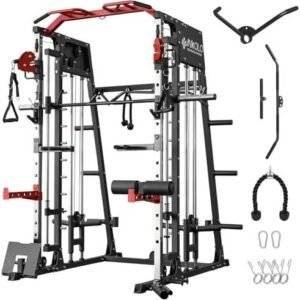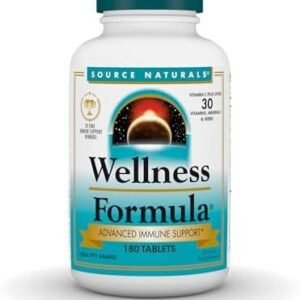In the dynamic world of fitness and nutrition, the quest for muscle growth is a journey that intertwines science with art. At the heart of this pursuit lies one fundamental element: protein. But not all proteins are created equal, and understanding how to harness their power with precision can make all the difference in achieving your body’s potential. Enter the concept of protein balance—a delicate equilibrium that governs not just muscle development but overall health and well-being.
In this comprehensive guide, we’ll embark on an exploration of the intricate relationship between protein intake, timing, and muscle synthesis. From debunking common myths to unveiling actionable strategies, we’ll equip you with the knowledge needed to master your protein balance and elevate your muscle-building efforts to new heights. Whether you’re an aspiring athlete, a seasoned gym-goer, or simply someone eager to improve their nutritional game, prepare to unlock the secrets of effective muscle growth—one protein-packed meal at a time.
Table of Contents
- Understanding the Role of Protein in Muscle Synthesis
- Strategies for Calculating Your Daily Protein Requirements
- Timing and Distribution: Optimizing Protein Intake for Maximum Gains
- Choosing Quality Protein Sources for Enhanced Performance
- In Conclusion
Understanding the Role of Protein in Muscle Synthesis
Proteins are the building blocks of muscle, playing a vital role in the synthesis and repair of muscle tissues after intense exercise. When you engage in resistance training or workout sessions, microscopic tears occur in your muscle fibers. It is during the recovery phase that protein becomes crucial. Specifically, the amino acids derived from protein not only help to repair these tears but also stimulate muscle hypertrophy—the increase in muscle size. This process, known as muscle protein synthesis, relies on a delicate balance of protein intake.
To optimize this synthesis, it’s essential to understand how protein consumption aligns with your training regimen. Here are some key factors to consider:
- Type of Protein: Incorporate a mix of animal-based and plant-based proteins for a complete amino acid profile.
- Timing: Aim to consume protein shortly after workouts to enhance recovery and growth.
- Quantity: Depending on activity levels, aim for about 1.6 to 2.2 grams of protein per kilogram of bodyweight per day.
Moreover, a consistent intake of protein-rich foods supports not just muscle synthesis but overall health. Below is a simple comparison of popular protein sources that can effectively contribute to your daily intake:
| Protein Source | Protein Content (per 100g) |
|---|---|
| Chicken Breast | 32g |
| Quinoa | 14g |
| Tofu | 8g |
| Greek Yogurt | 10g |
| Eggs | 13g |
Strategies for Calculating Your Daily Protein Requirements
Calculating your daily protein requirements can be a game-changer in nurturing muscle growth and enhancing overall fitness. Start by assessing your body weight, as protein needs often correlate with this fundamental metric. A common guideline is to consume between 0.8 to 1.2 grams of protein per kilogram of body weight for those engaged in moderate to intense physical activities. To simplify, consider your activity level and goal—are you aiming to maintain, gain, or lose weight? Tailoring your intake based on these factors will help you maintain the right balance.
Another effective strategy is to track your protein sources throughout the day. Incorporate a variety of protein-rich foods into your diet, such as lean meats, fish, dairy, legumes, and nuts. By distributing your protein intake across meals, you’ll promote better muscle synthesis. To give you a clearer picture of how to structure your meals, refer to the table below that outlines ideal protein sources alongside their respective protein content per serving.
| Food Item | Protein Content (grams) |
|---|---|
| Chicken Breast (100g) | 31 |
| Salmon (100g) | 25 |
| Lentils (1 cup cooked) | 18 |
| Greek Yogurt (1 cup) | 20 |
| Almonds (30g) | 6 |
Timing and Distribution: Optimizing Protein Intake for Maximum Gains
To achieve optimal muscle growth, understanding the timing of protein intake is crucial. Your muscles are most receptive to nutrient absorption in the anabolic window, which typically lasts for about 30 minutes to two hours following your workout. During this period, consuming a protein-rich meal or shake can significantly enhance recovery and promote muscle synthesis. Prioritize the following strategies:
- Pre-Workout Protein: Consuming protein before exercise can prepare your muscles for the impending strain, minimizing damage and maximizing gains.
- Post-Workout Refueling: Aim to consume 20-30 grams of high-quality protein after workouts to kickstart recovery.
- Even Distribution: Instead of cramming protein into one or two meals, distribute intake evenly throughout the day to maintain a positive nitrogen balance.
In addition to timing, how you spread your protein consumption across meals can also make a significant difference. Aiming for 20-30 grams of protein at each meal is generally recommended for muscle repair and growth. Check out the following table for a quick reference on protein-rich foods and their approximate protein content:
| Food Item | Protein per 100g |
|---|---|
| Chicken Breast | 31g |
| Greek Yogurt | 10g |
| Lentils | 9g |
| Salmon | 25g |
| Eggs | 13g |
Choosing Quality Protein Sources for Enhanced Performance
When it comes to enhancing athletic performance and achieving muscle growth, the quality of protein sources you choose plays a pivotal role. Opting for high-quality proteins can provide the essential amino acids your body requires to repair and build muscle tissues effectively. Here are some excellent options to consider:
- Lean meats: Chicken, turkey, and lean cuts of beef are packed with essential amino acids.
- Fish: Salmon and tuna not only offer protein but are also rich in omega-3 fatty acids, supporting overall health.
- Dairy products: Greek yogurt and cottage cheese are excellent sources of protein and also provide calcium.
- Plant-based proteins: Incorporate lentils, chickpeas, and quinoa to diversify your intake while still getting substantial protein.
Moreover, it’s vital to consider the bioavailability of these protein sources as it determines how efficiently your body can utilize them. Proteins from animal sources generally have a higher bioavailability compared to most plant-based options. For a quick comparison, refer to the table below, highlighting the protein content and bioavailability of common protein sources:
| Protein Source | Protein Content (per 100g) | Bioavailability (BV) |
|---|---|---|
| Chicken Breast | 32g | 79 |
| Salmon | 25g | 78 |
| Eggs | 13g | 100 |
| Lentils | 9g | 53 |
By selecting a variety of high-quality protein sources, you will not only support muscle repair and growth but also enhance your overall performance, allowing you to push beyond your limits.
In Conclusion
As we draw the final curtain on our exploration of “Mastering Protein Balance,” it’s essential to remember that achieving effective muscle growth is a journey, not a destination. The delicate dance of macronutrients, particularly protein, is an art that can transform your fitness aspirations into tangible realities. By understanding the science behind protein timing, quality, and quantity, you empower yourself to sculpt the physique you desire.
As you embark on your personalized fitness journey, keep in mind that consistency and patience are your best allies. Embrace the process, celebrate the small victories, and remain committed to fine-tuning your approach. Remember, each meal, each workout, and each day presents an opportunity to invest in your muscle development.
Incorporate the insights shared within this guide and tailor them to your unique lifestyle. Whether you’re a seasoned athlete or just starting out, the principles of protein balance will serve as the backbone of your muscle growth strategy.
So, gear up, stay curious, and let science guide you as you push your limits. With determination and the right knowledge, you’ll not only master your protein balance but also unlock your body’s full potential. Here’s to your success in muscle growth—may your gains be both effective and enduring.





